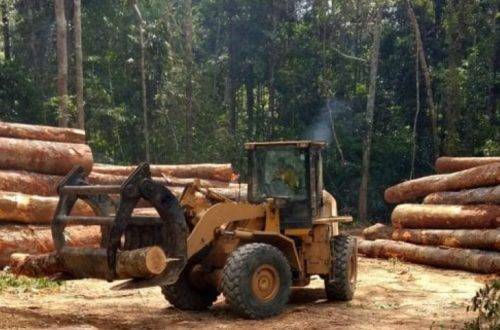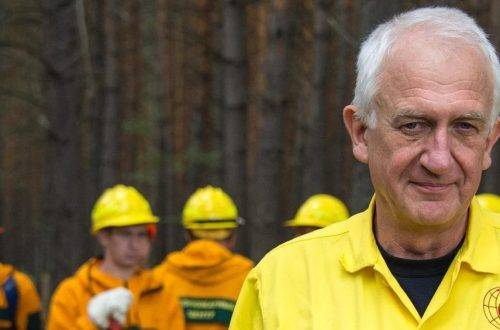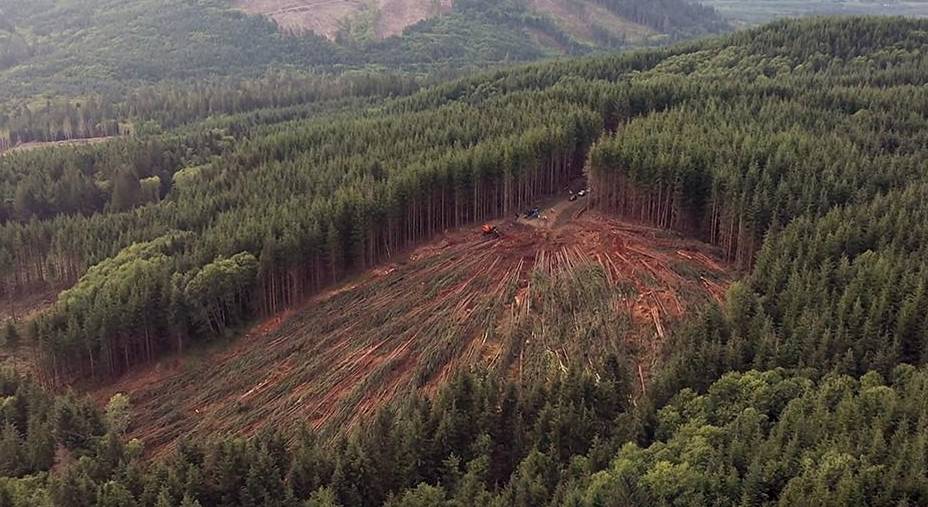
Demonstrating Sustainable Practices: How Forestry Companies Establish Their Commitment
Rayonier provides a unique and transparent perspective on sustainable forestry certification, offering valuable insights into their practices.
When questioned about the impact of sustainable forestry certification, Richard Boitnott has firsthand experience spanning over two decades, where his feedback during audits has led to companies across the United States significantly improving their ability to showcase their sustainability practices.
Richard Boitnott, working as a third-party auditor with Bureau Veritas, plays a critical role in evaluating whether forestry companies comply with the standards set by the Sustainable Forestry Initiative® (SFI). Over the course of his career, he has meticulously assessed numerous forests to ensure their adherence to these requirements.
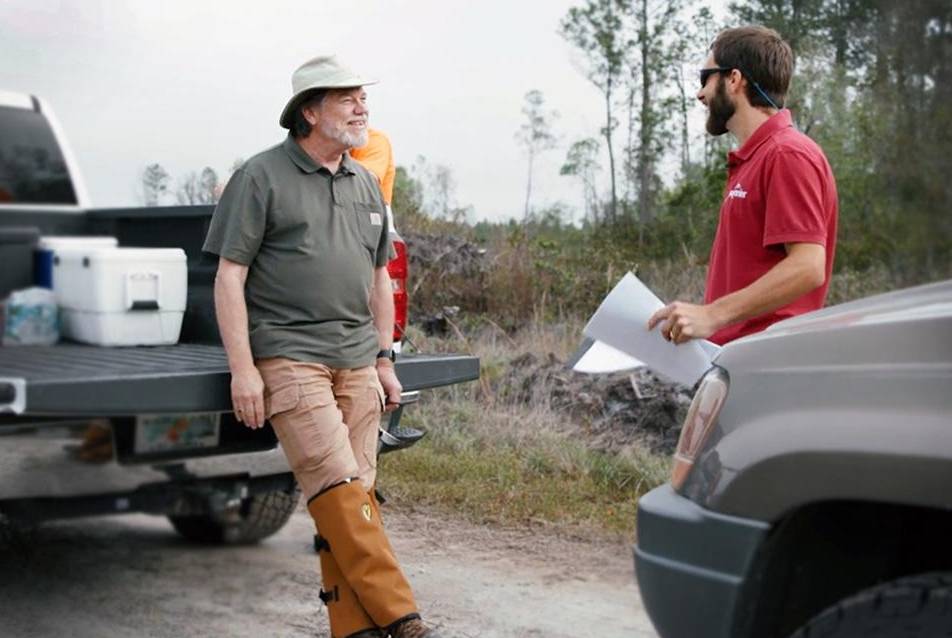
While perfect audits are rare, most audits are excellent with room for improvement—a crucial aspect that certified companies seek. Instead of settling at a particular sustainability level, these companies strive for ongoing enhancement and fortification of their endeavors to preserve and sustain the forest ecosystem. Their goal is continuous improvement, ensuring that their practices align with evolving sustainability standards.
Richard highlights that the most valuable audits are those where findings contribute to the improvement of a company’s system, and both parties acknowledge and appreciate the collaborative effort in enhancing the system. Recognizing the positive impact on system improvement is a significant outcome of such audits.
In certain instances, companies pursuing sustainable forest certification may require substantial guidance before achieving their initial certification. Richard takes immense pride in the transformative influence that such guidance can have on land management practices.
Richard, an experienced auditor with 22 years of expertise, emphasizes the crucial role of forest certification in promoting higher sustainability standards. He asserts that without the impetus provided by forest certification, a significant portion of land would lack the necessary motivation to strive for improved sustainability practices. Forest certification serves as the driving force behind meaningful change in the industry.
This article delves into different facets of sustainable forestry certifications, encompassing the certification process, objectives, audits, and the significance of consistently elevating environmental and social sustainability standards in the forestry sector.
What is a sustainable forestry certification?
Sustainable forestry certifications, such as SFI, the Forest Stewardship Council (FSC), and the Programme for the Endorsement of Forest Certification (PEFC), establish stringent environmental standards in the forestry industry, guaranteeing the adherence to the highest levels of sustainability.
Various standards encompass forest management practices, spanning from land preparation for planting to sustainable tree harvesting methods. Additionally, there are specific standards applicable to mills involved in log processing and companies engaged in manufacturing forest-based products available in stores. When purchasing forest products like wood, paper, or cardboard items, you can look for sustainable forestry certification labels to ensure they originate from responsibly-managed sources.
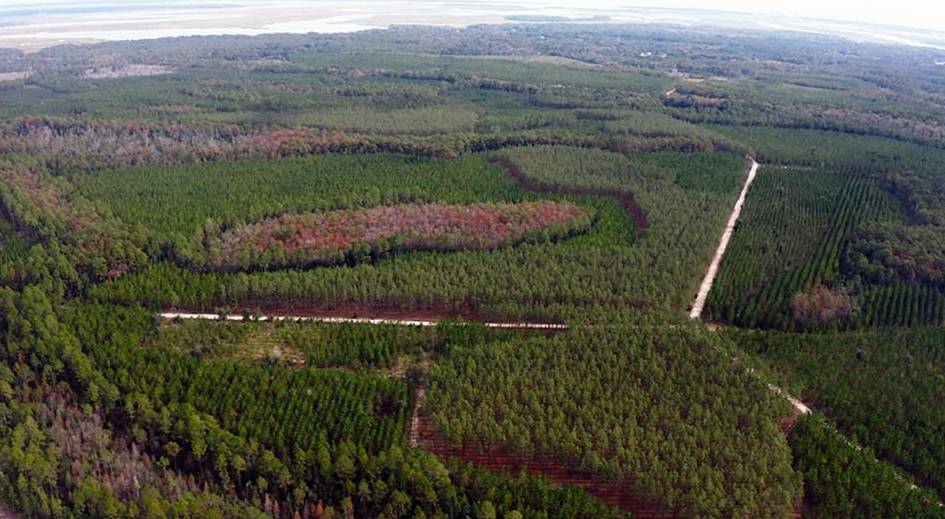
In forest management, the standards ensure the entire forest ecosystem will thrive.
The SFI guidelines ensure that forest owners adhere to sustainable harvesting practices, limiting the amount harvested to a small percentage of their total land base. With a significant portion of their forests in various growth stages, over 90 percent in some cases, this approach guarantees a continuous supply of wood while maintaining diverse forest ecosystems at different stages of the life cycle. Additionally, the standards incorporate measures to safeguard waterways from sedimentation and chemical contamination.
Protecting vulnerable habitats
Forest certification standards play a vital role in safeguarding the habitats of vulnerable species. One notable example is the establishment and protection of expansive boundary areas around bald eagles’ nests for as long as the nests are present.
Foresters receive specialized training to identify and safeguard various species, some of which may be unfamiliar to the general public. For instance, in the Red Hills region of Alabama, Rayonier foresters play a crucial role in protecting the highly endangered Red Hills Salamander, a species that was only discovered in the 1960s. To delve deeper into this remarkable creature and the conservation efforts undertaken, we invite you to watch our video story titled “Foresters Protect Rare Salamander Found Only in Alabama.”
Standards evolve
The latest standards introduced by SFI focus on climate smart forestry, promoting forest practices that enhance resilience to future climate changes. These standards also emphasize fire resilience and awareness, incorporating practices to safeguard forests against wildfires while educating the public about this issue. Furthermore, SFI emphasizes social measures, including the implementation of diversity, equity, and inclusion policies, as well as fostering collaboration with indigenous communities. These standards collectively contribute to sustainable forest management and community engagement.
Companies have been implementing best practices in forest management even before obtaining certification. However, certification serves as external validation, providing assurance that our forests are being sustainably managed. Rayonier has been certified according to the SFI standard in the U.S. since 2001, and the FSC and PEFC standards in New Zealand since 2004, highlighting our longstanding commitment to sustainable practices.
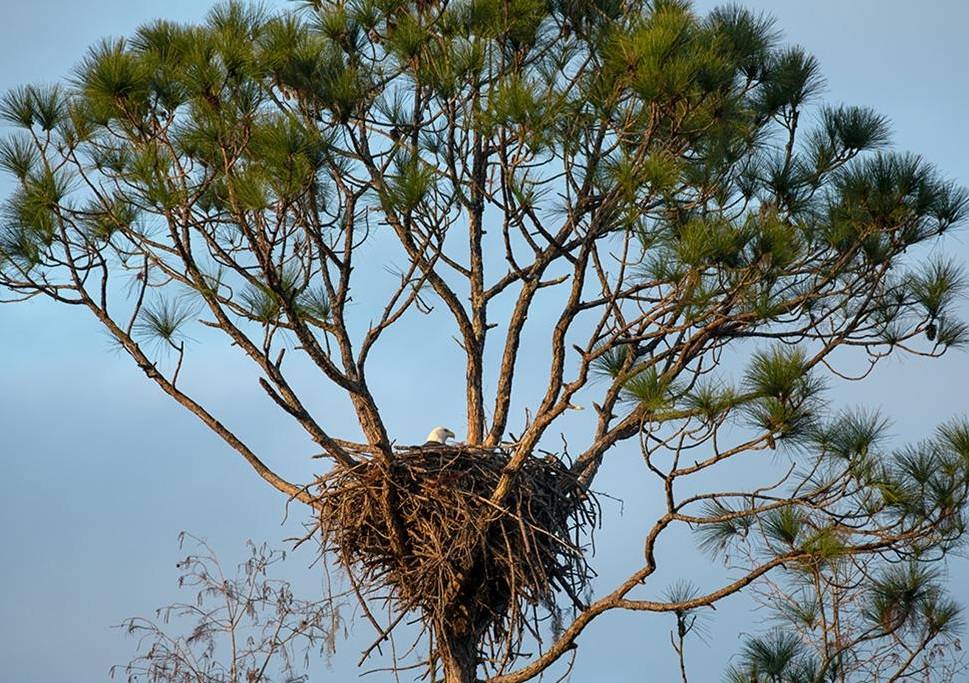
What are the SFI sustainable forestry certification objectives?
The forest management certification standard of SFI encompasses over 40 performance measures and 130 sustainable forestry indicators. These indicators are organized into the following 17 objectives:
- Forest management planning
- Forest health and productivity
- Protection and maintenance of water resources
- Conservation of biological diversity
- Management of visual quality and recreational benefits
- Protection of special sites
- Efficient use of fiber resources
- Recognition and respect for Indigenous Peoples’ rights
- Climate smart forestry
- Fire resilience and awareness
- Legal and regulatory compliance
- Forestry research, science, and technology
- Training and education
- Community involvement and landowner outreach
- Public land management responsibilities
- Communications and public reporting
- Management review and continual improvement
How do timber companies become certified for sustainable forestry?
If a company wants to be certified for sustainable forestry, it must apply to the certification body, pay an annual fee based on acres managed and net sales and show that it meets certain requirements.
After the acceptance of the application, the company is obligated to integrate all the standards outlined by the certification body into its operational framework. Subsequently, the company will undergo third-party audits of its documentation and forests to verify its compliance with the established standards.
Once the company obtains official certification, it is subjected to annual external audit reviews. These audits aim to assess the company’s effectiveness in safeguarding its forests while also identifying opportunities for further enhancement. Certified companies are committed to ongoing improvement and strive to optimize their practices to ensure the utmost care and stewardship of their forests.
In addition to external audits, companies also conduct internal audits at regular intervals. Furthermore, state forest divisions conduct periodic audits of the companies’ forests to assess compliance with Best Management Practices (BMPs), which are state-established guidelines for protecting waterways. Reports from these internal and state audits are included as part of the comprehensive annual third-party audit process.
What happens when a sustainable forestry certification entity audits a forest owner?
During the certification audit for sustainable forestry, the process consists of two main segments: auditing documents and auditing forests.
What happens during the document portion of an SFI forest audit?
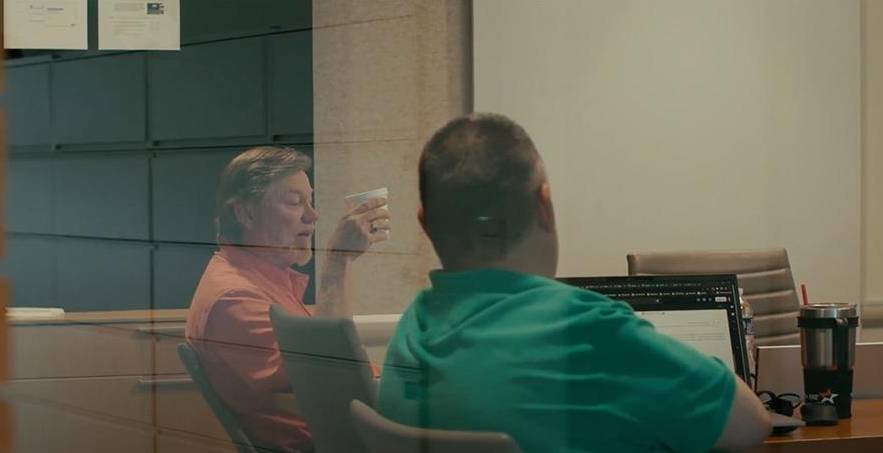
During a recent annual audit conducted at Rayonier’s Headquarters in Wildlight, Florida, Richard dedicated an entire day in a conference room alongside Rayonier employees. The objective was to meticulously review approximately 500 documents, thoroughly assessing their compliance with over 130 distinct SFI indicators.
The requirements cover a wide range of aspects, encompassing technical aspects of forest planting, management, and harvesting, as well as social standards such as Indigenous relations and diversity, equity, and inclusion (DEI) policies. During the audit, employees were expected to readily access and provide comprehensive explanations on various document details whenever queried by Richard.
What happens during the field portion of an SFI forest audit?
The second phase of the audit involved multiple days spent in the forest. Each day, Richard would carefully choose specific sites that he wanted to personally inspect. As an auditor, he would thoroughly examine documents to identify instances where things did not go as planned, such as unexpected weather events or miscommunications with contractors. This hands-on approach provided valuable insights into real-life scenarios and their alignment with the documented procedures.
Subsequently, the auditor will visit the respective location to directly observe the incident and engage in discussions with the responsible foresters regarding the decisions made in relation to the specific incident. Additionally, the auditor will pose general inquiries to assess the expertise and knowledge of the forester in a broader context. This comprehensive approach enables the auditor to gain a deeper understanding of the situation and evaluate the overall competence of the forestry professionals involved.
During the 2023 Rayonier audit, Richard accompanied a group of Rayonier foresters into a forest located in Lake City, Florida. He engaged in discussions with them, posing questions regarding their approach to safeguarding an eagle’s nest if discovered. Richard also inquired about their knowledge of soil types and their decision-making process for selecting appropriate tree species for each plot. Furthermore, he conducted checks to ensure that herbicide aerial applications had been appropriately halted in designated areas as directed by the forester.
Protecting properties of special importance
The SFI standard mandates that forestry companies safeguard properties of significant importance. Forester Joe Geisel, a Resource Land Manager at Rayonier, highlighted a specific area within the forest that held deep significance due to a tragic incident. This particular location was the site where two wildland firefighters lost their lives while bravely battling the Blue Ribbon Wildfire in 2011.
During the audit, Joe led the auditor to two memorials that had been erected to honor the fallen firefighters at the exact locations where they had tragically lost their lives. He takes personal responsibility for maintaining and preserving the memorial site as a tribute to their memory. Furthermore, the memorial is an integral part of an annual staff ride organized by the Florida Forest Service, which serves as a way to pay homage to the firefighters and educate the staff about the valuable lessons derived from the unfortunate incident.
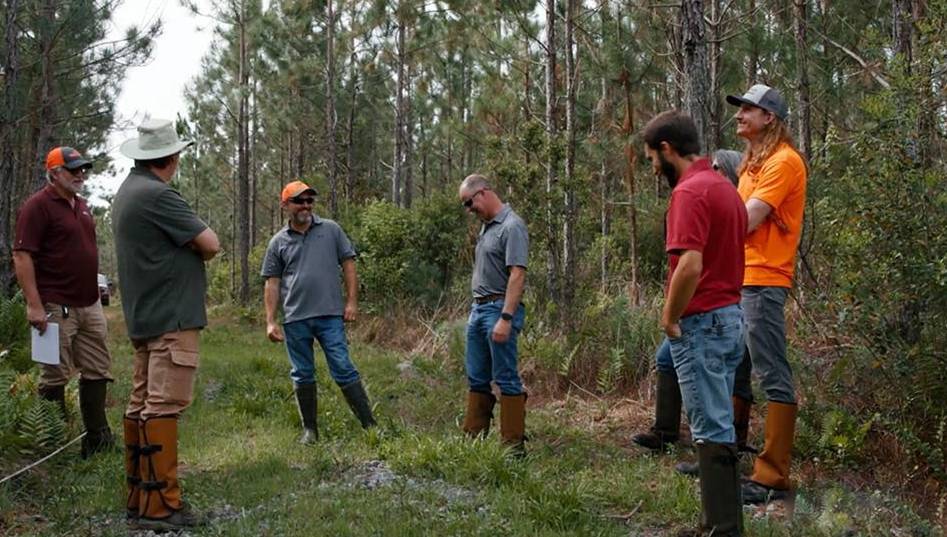
Foresters also play a crucial role in safeguarding sites of historical significance, areas that provide habitat for threatened or endangered species, remarkable trees, water features, cemeteries, and other geologically or culturally significant sites. These efforts ensure the preservation and conservation of these important ecological and cultural resources.
One notable example of a protected site within Rayonier’s land is Brooks Sink, which happens to be the largest sinkhole in Florida. Rayonier has collaborated with the Suwannee River Water Management District to implement measures diverting additional water into the sinkhole. This action plays a vital role in replenishing the Floridan aquifer, thus contributing to the preservation of this important water resource.
Research is a component of good forest management
The SFI forest management standard stipulates that certified organizations must actively engage in research initiatives. At Rayonier, we have a dedicated in-house research team and actively collaborate with other forestry organizations and universities in conducting cooperative research projects. These endeavors contribute to the advancement of scientific knowledge and the development of innovative practices in the forestry industry.
A recent collaborative initiative involving Rayonier, the University of Florida, and the Suwannee River Water Management District aims to enhance water flow in streams by implementing forest management strategies. This cooperative effort explores innovative approaches to improve water management practices. Internally, Rayonier is also actively engaged in research and partnerships to further investigate climate risks and develop effective mitigation measures. These efforts align with the additions made to SFI’s Forest Management Standard in 2022, which emphasize the importance of addressing climate-related challenges in forest management.
What actions are taken when a sustainable forestry certification audit identifies any issues or incidents?
While companies aspire to excel in audits, it is common to find areas for improvement as the audits are intentionally conducted with rigorous standards.
According to Ben Cazell, Rayonier’s Senior Manager of Sustainable Forestry, the desire for honest feedback is paramount during audits. Foresters have a deep commitment and personal investment in the lands they manage, constantly striving to make informed decisions and ensure adherence to best practices. While perfection may not always be attainable, receiving feedback on areas where improvement is possible is valuable. It is beneficial to hear both praise for a job well done and constructive criticism to enhance performance in specific aspects.
An illustration of this is the implementation of new climate smart forestry standards by SFI, which has enabled companies to explore innovative approaches in tackling climate change and adapting to its impacts. In instances where there is a significant deviation from SFI standards, auditors categorize it as either a minor or major “nonconformance.” This classification indicates areas where corrective actions are required to ensure alignment with the established standards. Richard clarifies the distinction between minor and major nonconformance, stating, “A minor nonconformance indicates that the system may require adjustments, while a major nonconformance signifies a more significant breakdown within the system.” He further explains that due to their experience in the industry, most professionals understand how to prevent major nonconformances and thus encounter them less frequently. Minor nonconformances, on the other hand, are more common and serve as opportunities for improvement and refinement.
The difference between a minor and major nonconformance in an SFI audit
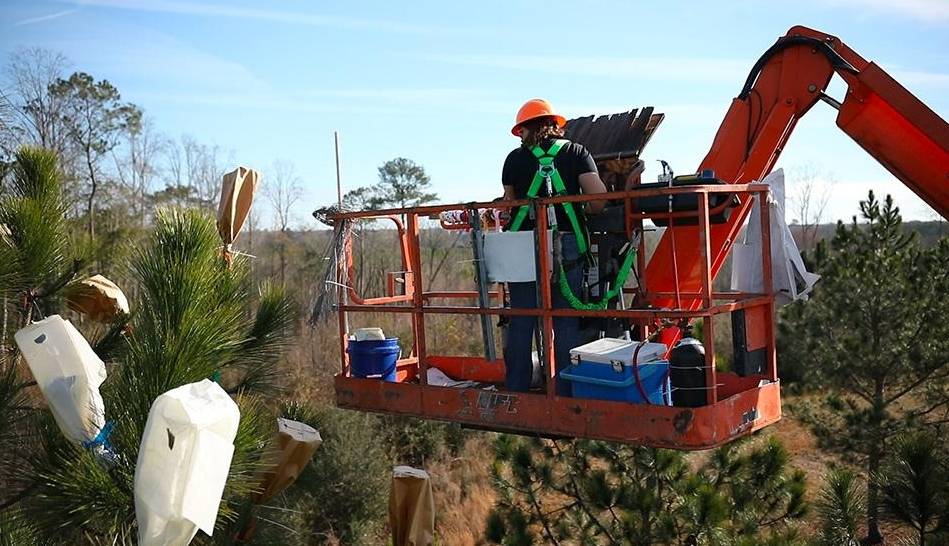
Richard provides an example of a minor nonconformance, such as an isolated incident where sediment enters a stream. In contrast, a major nonconformance would involve three or more instances of sediment infiltration into waterways. This distinction illustrates that minor nonconformances typically involve single or occasional deviations, while major nonconformances indicate recurring or systemic issues that require immediate attention and corrective measures.
Richard further clarifies the concept of “opportunity for improvement,” emphasizing that not every aspect of the business can be strictly categorized as either conforming or nonconforming. He acknowledges the existence of various nuances and shades of gray within the industry. Richard only labels something as a nonconformance when it clearly deviates from the established standards. However, if he notices areas that warrant attention and improvement without being definitively nonconforming, he identifies them as opportunities for improvement.
Richard expresses that the most satisfying audits for him are those that result in a positive transformation within a company. He finds it gratifying when, at the conclusion of the audit, the company acknowledges the identified areas for improvement and commits to making necessary changes. Hearing their acceptance and commitment to improvement signifies a collaborative approach and a willingness to enhance their practices. Richard considers these audits as the most rewarding because they reflect a shared dedication to continuous improvement and progress.
What are the outcomes when a company exceeds the minimum SFI standard and performs exceptionally well?
In exceptional cases, a company may receive recognition for surpassing the SFI standard and showcasing exemplary practices that serve as a benchmark for other industry peers to emulate.
Being acknowledged with a “notable practice” designation is a distinct honor reserved for those who have demonstrated exceptional achievements or initiatives.
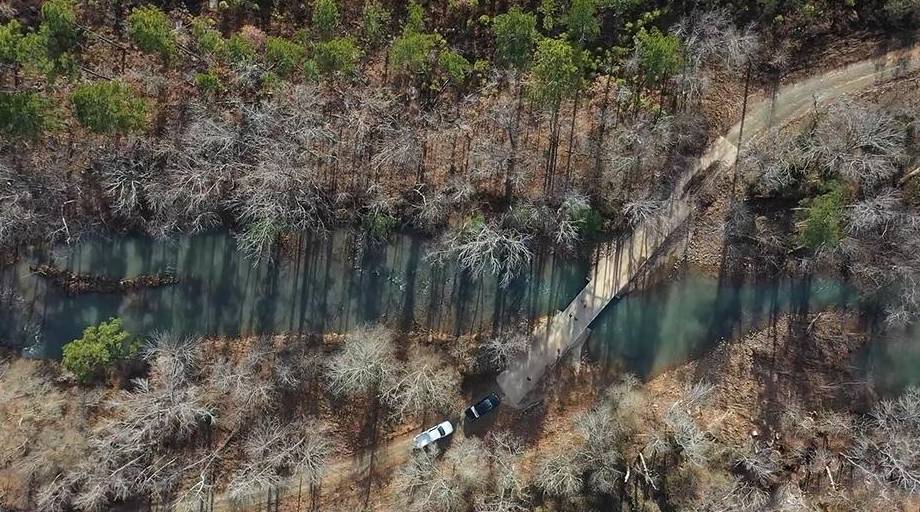
Ben recollects an instance where Rayonier received recognition for their implementation of winch-assisted logging techniques on steep slopes in the Pacific Northwest. This innovative approach involves utilizing a winch machine that securely anchors into stable ground on a flat landing area. The machine utilizes a robust cable system to support heavy equipment operating on the steep terrain, significantly enhancing safety for the logging crew. Moreover, this method minimizes environmental impact by reducing the necessity for constructing roads on the slopes.
Our notable practice recognition was specifically attributed to our adoption of this advanced technology, which has significantly reduced the need for road construction in our operations.
How to know if a company is certified for sustainable forestry
Sustainability certification information is readily available on the websites of forestry companies, and it is frequently included in their reports and investor documents.
The membership of forestry companies can be verified on the websites of the respective certification bodies. For instance, the SFI database can be accessed at sfidatabase.org, the PEFC database at pefc.org/find-certified, and the FSC database at search.fsc.org/en/. These websites provide public access to the third-party audit reports of the member companies, offering transparency and accountability in their certification process.



